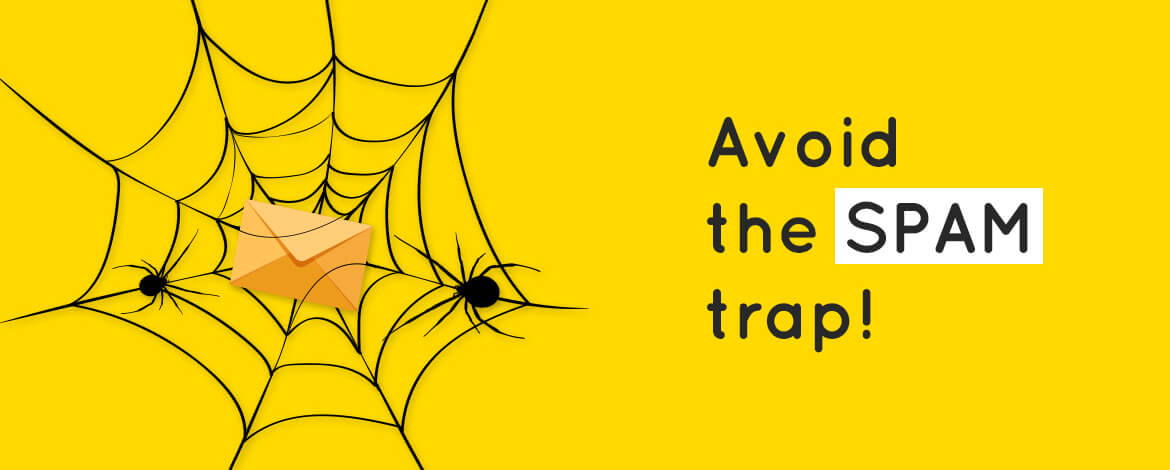In a place far far far away, there was an email marketer charting out his marketing strategy. He identified his target audience, chartered his lead generating process, prepared incentives and set up his marketing and automation email processes. His emails have been freshly off the developer’s desk and ready to be received at his subscribers’ inbox. Moments after pressing the most feared button ever to be known to an email marketer (to those uninitiated, the Send Button), he observes poor delivery and exclaims:
He retraces his steps and checks his sender reputation and deliverability score, only to find they are not the culprits. What went wrong? How did his hopes for a high ROI get dashed against the trap of the SPAM filter?
Surprisingly, certain ISP spam filters also monitor certain nuances on the email design and coding and if the incoming email is not compliant to their requirements then it gets marked as SPAM. We Uplers have listed out different pitfalls that trigger SPAM traps and how you can avoid them. Though different spam filters and email firewalls have different protocols that they follow, we have listed below the best practices followed currently.
For reference:
- Priority High are those which you need to tackle first, since that will impact faster.
- Severity High are the ones which might have a huge impact but then slowly, so sooner the better. Yet it is not necessary they are at highest priority for all.
Design Pitfalls that SPAM filter look for
- Follow branding guidelines: Even though this is a no-brainer and not involved directly with an email spam filter, some brands have emails that are not easily associated with their branding design and people may mark it as a spam. SPAM filters ‘learn’ when various subscribers mark a specific email as SPAM and any further emails having similar subject lines, design layout, IP address, etc. are also considered so.
Priority – Low | Severity – High (Human inspired) - Spam filters hate flashy emails. Using bold colors such as red and green to highlight certain parts of your email raises certain red flags (pun intended). Changing the background color and font color also draws unwanted attention.
Priority – Low | Severity – Low - Viewing the larger picture: Even though we promote usage of custom fonts as images, don’t have a large image occupy the major chunk of your email body. SPAM filters mistake it to be a spamming gig. Based on your overall email length, maintain an 80/20 text to image ratio.
Priority – High | Severity – High - Hide and Go unsubscribe: Never hide or ignore placement of the unsubscribe/opt-out link in your campaigns. The CAN-SPAM Act mandates the requirement of an unsubscribe link to be present in every campaign that you send. SPAM filters are smart enough to weed emails with no unsubscribe links. Even though many ESPs provide unsubscribe links, it is better to be safe than sorry.
Priority – High | Severity – High - Avoid usage of words such as Free, Money Back Offer Guaranteed and other similar click-bait terms. You may find the list here.
Priority – High | Severity – High - Never make your call-to-action buttons excessively in-your-face kind buttons. Use contrasting colors but not over-loud ones. Also generic CTA copy such as ‘CLICK HERE’ triggers spam.
Priority – Low | Severity – Low
Subject Line Pitfalls that SPAM filter look for
- Typing in capitals sounds disturbing as it imitates someone shouting it out. Avoid it.
Priority – High | Severity – High - Do not use exclamation signs or other punctuation marks more than once.
Priority – Low | Severity – Low - D0n’+ e\/er +ype like +|-|is (Don’t ever type like this).
Priority – High | Severity – High - Never deceive your subscribers by using ‘Re’ or ‘Fwd’ in the subject line. SPAM filters monitor this very efficiently.
Priority – High | Severity – High
Coding Pitfalls
- Codes copy-pasted from Microsoft Word or Frontpage adds extra tags or poorly coded sloppy HTML is immediately weeded out by SPAM filter.
Priority – Low | Severity – Low - Keep your email size under 30kb. Avoid unnecessary text, images and remove excessive nesting table.
Priority – High | Severity – High - Try to avoid including any attachments.
Priority – High | Severity – High
Test it before you hit send
- MailingCheck is free software that can be used to check your email content for spam.
- IsNotSpam is a free online spam checker that requires you to email your content to them and they send you an alert if the content contains spam triggering factors.
Parting Thoughts
Making an email reach any inbox involves loads of preparations and knowledge of the different spam triggers. Hope you shall take a leaf out of the above listed best practices. For improving your sender score and email reputation, refer to our “Email Deliveribility Best Practices” infographic.
